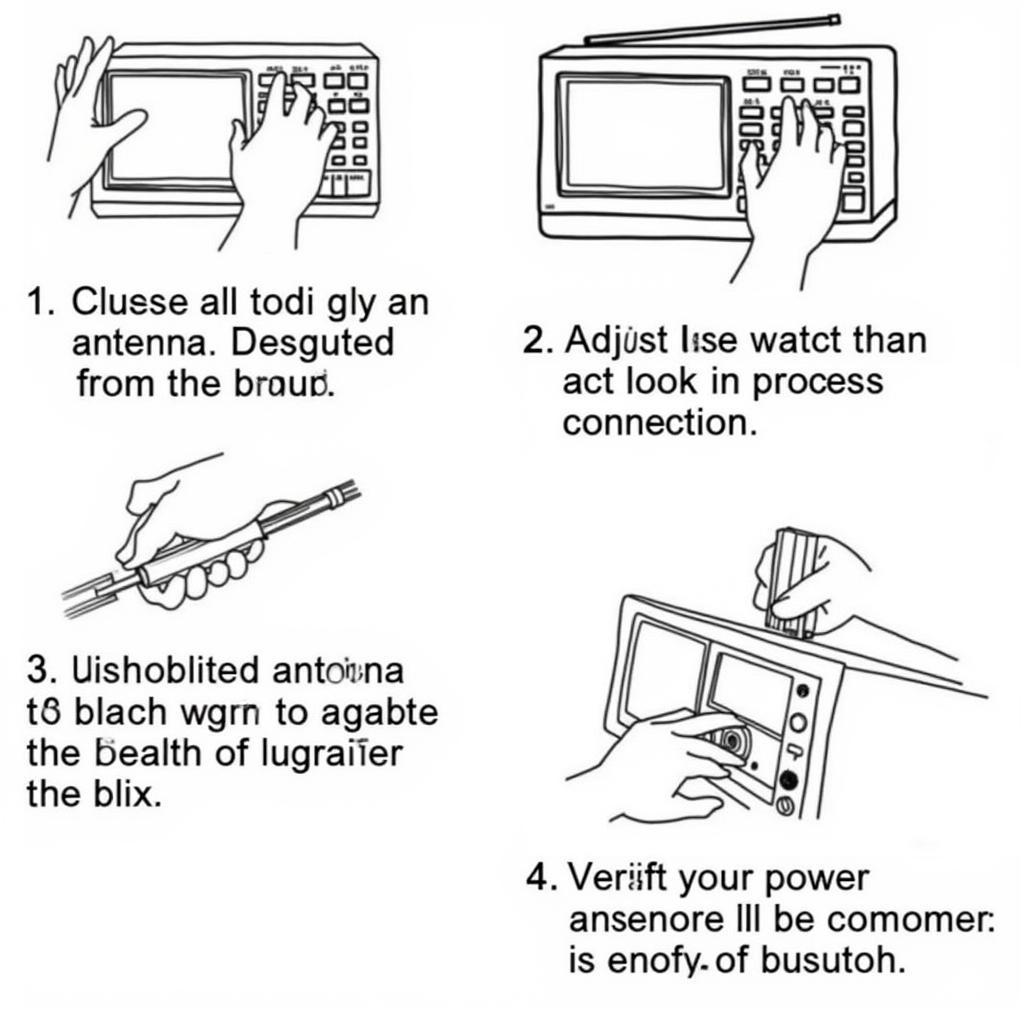In-car amateur radio, often referred to as CB (Citizens Band) radio, provides a unique communication experience for drivers, offering everything from real-time traffic updates to friendly chatter with fellow road users. This comprehensive guide explores the world of in-car amateur radio/CB, covering everything from basic principles to advanced techniques. Whether you’re a seasoned operator or just starting out, this article will equip you with the knowledge you need to navigate the exciting world of on-road communication.
Understanding the Basics of In-Car Amateur Radio / CB
Amateur radio, in its broader sense, encompasses a wide range of frequencies and operating modes. In-car amateur radio typically refers to the use of CB radio, which operates on a designated set of frequencies allocated for personal and business use. Unlike other forms of amateur radio, CB radio doesn’t require a license, making it accessible to anyone. The appeal of in-car amateur radio/CB lies in its ability to connect drivers, providing immediate information on road conditions, traffic incidents, and even local points of interest. It’s a valuable tool for staying informed, especially during long journeys or in areas with limited cellular coverage.
Why Choose In-Car Amateur Radio / CB?
- Real-time traffic updates: Bypass official channels and get firsthand information directly from other drivers.
- Emergency communication: In situations where cell service is unavailable, CB radio can be a lifeline.
- Community building: Connect with fellow drivers, truckers, and enthusiasts who share your passion for the open road.
- Enhanced situational awareness: Stay informed about road hazards, weather conditions, and other important information.
Choosing the Right Equipment for Your Needs
Selecting the right equipment is crucial for a positive in-car amateur radio/CB experience. The market offers a wide range of options, from basic handheld units to sophisticated mobile setups. Consider your specific needs and budget when making your decision.
CB Radio Units
- Handheld CB radios: Portable and convenient, ideal for occasional use or as a backup communication device.
- Mobile CB radios: Designed for in-car installation, offering more power and features for regular use.
Antennas
- Base-loaded antennas: Easy to install and offer good performance for general communication.
- Center-loaded antennas: Provide improved performance, particularly for longer-range communication.
Accessories
- External speakers: Enhance audio clarity, especially in noisy environments.
- Microphone upgrades: Improve voice transmission quality and reduce background noise.
 Different types of CB radio antennas for cars
Different types of CB radio antennas for cars
Operating Procedures and Etiquette
Understanding proper operating procedures and etiquette is essential for effective and respectful communication on the CB channels.
Channel Selection
Channel 9 is designated for emergency communication. Avoid using this channel unless you have a genuine emergency. Channel 19 is commonly used by truckers for sharing road information. Other channels are available for general communication.
Radio Etiquette
- Keep transmissions brief and to the point.
- Avoid using offensive language.
- Be mindful of other users and avoid interrupting conversations.
- Use the appropriate call signs and terminology.
“Clear communication and proper etiquette are crucial for a positive CB radio experience,” says John Smith, a certified amateur radio instructor with over 20 years of experience. “Respecting other users and adhering to established protocols ensures that the channels remain accessible and useful for everyone.”
Troubleshooting Common Issues
Like any electronic device, CB radios can sometimes experience technical issues. Here are some common problems and troubleshooting tips.
Poor Reception
- Check the antenna connection and ensure it’s securely attached.
- Adjust the squelch control to filter out background noise.
- Relocate the antenna to a higher position if possible.
Low Transmission Power
- Verify the power connections to the radio unit.
- Check the antenna for damage or obstructions.
“Troubleshooting CB radio issues often involves checking the basics,” explains Jane Doe, a veteran CB radio technician. “Ensuring proper antenna placement and secure connections can resolve many common problems.”
 Troubleshooting guide for common CB radio issues
Troubleshooting guide for common CB radio issues
Conclusion
In-car amateur radio/CB offers a valuable communication tool for drivers, providing real-time information, emergency communication capabilities, and a sense of community. By understanding the basics of operation, choosing the right equipment, and adhering to proper etiquette, you can enhance your driving experience and stay connected on the road.
FAQ
- Do I need a license to operate a CB radio? No, a license is not required for CB radio operation in the United States.
- What is the range of a CB radio? The range of a CB radio varies depending on terrain and atmospheric conditions, but typically ranges from a few miles to up to 20 miles.
- What is the purpose of the squelch control? The squelch control filters out background noise and static, improving audio clarity.
- How do I choose the right CB antenna? Consider factors such as mounting location, desired range, and budget when selecting a CB antenna.
- What is the emergency channel on a CB radio? Channel 9 is designated for emergency communication.
- Can I use a CB radio internationally? CB radio regulations vary by country, so it’s important to check local regulations before using a CB radio abroad.
- Where can I learn more about CB radio operation? Numerous online resources, forums, and clubs provide information and support for CB radio enthusiasts.
When you need assistance, contact us via WhatsApp: +1(641)206-8880, Email: [email protected] or visit us at 276 Reock St, City of Orange, NJ 07050, United States. We have a 24/7 customer support team.


